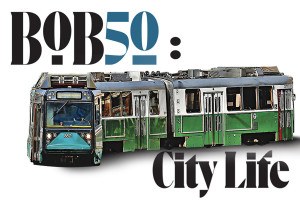‘Napwell’ Makes the Case for Snoozing While at Work

Photo via Napwell
There’s something to be said about napping at work, and the creators of a new sleep mask who claim their product can replenish a person’s energy level with just a few minutes of quality shut-eye, think more employees should be able to nod off once in awhile.
“There’s been recent publications that suggest it’s not how much you work, but how proficient you are,” said Napwell cofounder Neil Joglekar, who recently started a petition calling for more businesses to allow naptime at work. “It’s not about catching up on the night’s sleep before, it’s about getting that extra boost from 20 minutes of napping. We thought that we could actually make a real difference because no one is really thinking about this. We thought we could lead the charge and get companies to see that caffeine is damaging to people’s health, and there are alternatives.”
Like napping.
In December 2013, Joglekar and his business partner, Justin Lee, an MIT Ph.D candidate, put Napwell out to market via a Kickstarter campaign. As Boston reported at the time, the padded mask project, designed to keep users refreshed after taking a quick snooze using a system that mocks the sun rising, earned $51,000 from donors before its deadline. The funds helped the founders advance their research and get the first round of masks into people’s hands—and onto their faces.
But that wasn’t enough for Joglekar and his team. He wanted to really stress the importance of how beneficial a nap can be, so he started the online petition, aimed at the U.S. Chamber of Commerce, to try and overhaul what they call “outdated policies” in regards to sleeping (briefly) on the job.
The benefits of napping in the workplace are scientifically proven, and include increased alertness, job performance, memory function and creativity. Despite these benefits, many U.S. businesses continue to maintain outdated policies that discourage employee naps during break periods…this petition encourages U.S. companies to change the culture around workplace napping, with the potential upside of boosting productivity and supporting employee health.
Joglekar said the concept isn’t as crazy as it might sound. Already, big-name companies like Google, Nike, Huffington Post and others are letting workers catch a wink, and some businesses even have designated “nap rooms” and “nap pods.” While most of Napwell’s customers have been using the masks for traveling and siestas at home, they really want to tap into the workforce market.
Joglekar said there’s also research to back this plan. “It’s a real replacement for caffeine, in 20 minutes of spurts. Twenty minutes is something most people have during their day,” he said, claiming Napwell matched with naptime could really help productivity levels.
We wanted to know more about Napwell’s mission and petition, so we asked Joglekar a few more questions while he was in Boston to introduce the idea of “works naps” to some local companies:
Do you really think the Chamber of Commerce will change their ways?
I’m a big believer in quickly figuring out what can make the most real change. I like to believe that speaking with the government would have the biggest impact, but they have a lot of issues on their plate, and I don’t know where napping falls on their list. We can be realistic that it won’t be at the top of their minds, so we’re going to try to see what works best. We have been trying to find sponsor companies that will help support us in this.
Like who?
While I’m in Boston, I’m trying to get in touch with HubSpot. We think they’d be receptive to it. We have been in touch with them on Twitter, but nothing formal. We’re trying to connect with them in guerrilla ways. They have that kind of culture, and I’m a personal fan of the company. They’re all about productivity and efficiency.
Are more and more companies really developing napping rooms?
It’s happening more and more. A lot of companies in the Bay Area are going that way. But it’s not just companies—hospitals have napping rooms because people need to recharge and take a break. But for the purposes of this petition, we have been targeting larger companies. We just want to create the conversation.
With people sleeping on the job, would they really benefit from this?
I feel like it’s cultural. A lot of places outside of the US, they embrace napping and they embrace its place in the day. I feel like US companies have this stigma that has built up over time. But I think there’s enough precedent that you could have a constructive conversation, and by beginning the conversation from an efficiency perspective. They will be thinking about it in terms of the bottom line, but I could name scenarios where napping increases an employee’s ability to retain information. I think napping could have real positive effects in terms of the bottom line.
How does Napwell fit into all of that?
We are pushing the concept of napping, and we are in a good position to start that conversation. We would love it if other companies would join us in this. We’re going to companies with napping rooms first. For us we are focused on the wakeup aspect of it. That’s the hurdle, if I’m a company letting someone nap 20 minutes, and then they’re groggy for 20 minutes when they wake up, that’s an hour wasted. So what we are going to do is go to these companies with napping rooms, and put them in the rooms, and have real feedback on how it goes. So we know the mask works, so we aren’t worried about that, but I want to see how it works into the workflow of their day.
How else will you measure whether or not it works…at work?
We’re curious to see in a professional setting how people use it. Our backers have been using it on planes, at home, while traveling—we have that evidence, so we are ready to try it in big organizations. There’s always a way to improve the efficiency of the workforce. As soon as I head back [from Boston] we’re going to start. I think it’s going to be fun. We’re doing a scientific experiment around it because a couple of the things we want to measure are what the average time is, and for how long people nap. We also want to look at how many times they are used, and when people are going into the napping room. Then we are going to ask them how they think it went.
We think it’ll likely go just fine.


